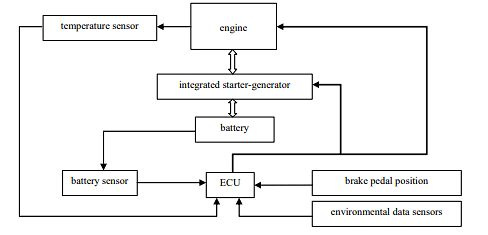The Start-Stop System Revolution: Does It Really Save Fuel?
Have you ever been curious about the Start-Stop System or Idling Stop feature in the latest cars or motorcycles? Yep, this technology that supposedly makes vehicles more fuel-efficient is really trending. But is it really that great?
In this article, we’ll have a casual chat about this advanced system. We’ll look at what the Start-Stop System actually is, how it works, and most importantly – can it really save fuel?
What Is the Start-Stop System?
So, the Start-Stop System, sometimes called Idling Stop, is a feature that automatically shuts off the vehicle’s engine when you stop, for example at a red light. Then, when you’re ready to move again, the engine starts by itself. Cool, right?
The idea is simple: if the engine is off when you’re not moving, it means no fuel is wasted. Sounds logical, doesn’t it? But is it really that simple?
How the Start-Stop System Works

Diagram of Start-Stop System
Now, how does it work? Trust me, it is not as complicated as you think. When you stop, sensors in the vehicle will check several things:
- Is the vehicle completely stopped?
- Is the brake pedal pressed? (for cars)
- Is the throttle closed? (for motorcycles)
- Is the engine temperature normal?
- Does the battery have enough power?
If all conditions are met, then the engine is turned off. Then when you want to move again, just release the brake or give a little gas, and the engine starts by itself. Impressive, right?
Can It Really Save Fuel?

Thinking about effect of Start-Stop System to Fuel Consumption
Now, this is the million-dollar question. The answer? Well… it depends. Some studies show that the Idling Stop can save about 3-10% of fuel. But keep in mind, this figure can vary depending on conditions.
For example, if you often get stuck in traffic or encounter many red lights on your journey, the benefits will be more noticeable. But if you’re more often on highways or rarely stop, it might not be as significant.
Pros and Cons of the Start-Stop System
Like other technologies, the Start-Stop System also has advantages and disadvantages. Let’s discuss!
Advantages:
- Potential fuel savings, especially in urban areas
- Reduces exhaust emissions
- Makes the atmosphere quieter when stopped
Disadvantages:
- Can make the battery wear out faster
- Sometimes feels “strange” for drivers who aren’t used to it
- May require extra maintenance for certain components
Tips for Using the Start-Stop System
If your vehicle is already equipped with this feature, here are some tips to maximize its use:
- Make sure the battery is always in prime condition
- Don’t immediately turn off the feature just because you’re not used to it
- On motorcycles, make sure the handlebar is straight when stopping
- In cars, press the brake steadily when stopping
- Pay attention to the indicator on the dashboard
Is the Start-Stop System Just a Gimmick?
After our lengthy discussion, the question is: is this technology real or just a gimmick? In our opinion, the Idling Stop System has real potential to save fuel. But again, its effectiveness greatly depends on how it’s used and road conditions.
For those who often drive in big cities with heavy traffic, this feature can be very helpful. But if you’re more often on open roads, the benefits might not be as significant.
Conclusion
So, the Start-Stop System is not just a gimmick, but it’s also not a magical technology that can make your vehicle super fuel-efficient. It’s an innovation that has good potential for saving fuel and reducing pollution, especially in urban areas.
The important thing is that we need to be wise in using it. Understand how it works, maintain your vehicle well, and use it according to your needs. That way, we can feel its benefits without having to worry about side effects.
So, how about it? Do you understand more about the Idling Stop System now? Hopefully, this article has helped you understand this cool technology. Don’t forget to always be wise when driving!
QnA of the Start-Stop System
You might want to know more about this system. Hence, below we will discuss about frequent questions about Idling Stop System with its answers.
Does the Start-Stop System make the battery wear out quickly?
There’s potential for the battery to wear out faster, but manufacturers usually anticipate this with special, more durable batteries.
Can I turn off this feature if I don’t want to use it?
Usually, yes. There’s a typically special button on the dashboard to activate or deactivate this feature.
What’s the difference between the Idling Stop System in cars and motorcycles?
The principle is the same, but on motorcycles, it’s usually called Idling Stop. The way it works is slightly different due to the mechanical differences between cars and motorcycles.
Does the Start-Stop System make the engine wear out quickly?
If used according to instructions, it shouldn’t. In fact, Idling Stop System can reduce engine working time when idle.
How long does it take for the Idling Stop System to activate?
It takes about 3-6 seconds after the vehicle comes to a complete stop. But it depends on the factory settings.
